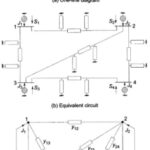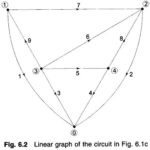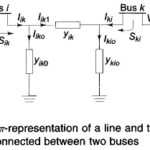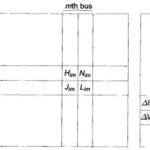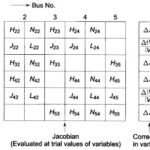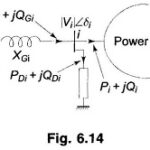Load Flow Studies Articles:
One Line Diagram of the 4 Bus System: A power system comprises several buses which are interconnected by means of transmission lines. Power is injected into a bus from generators, while the loads are tapped from it. Of course, there may … (Read More)
Formation of YBUS By Singular Transformation: Formation of YBUS By Singular Transformation – The matrix pair YBUS and ZBUS form the network models for load flow studies. The YBUS can be alternatively assembled by use of singular transformations given by a … (Read More)
Load Flow Analysis in Power System: Load Flow Analysis in Power System describes, the complex power injected by the source into the ith bus of a power system is where Vi is the voltage at the ith bus with respect to ground and Ji … (Read More)
Gauss Seidel Method: The Gauss Seidel Method (GS) is an iterative algorithm for solving a set of non-linear algebraic equations. To start with, a solution vector is assumed, based on guidance from practical experience in a physical situation. One of the … (Read More)
Newton Raphson Method for Load Flow Analysis: The Newton Raphson Method for Load Flow Analysis is a powerful method of solving non-linear algebraic equations. It works faster and is sure to converge in most cases as compared to the GS method. … (Read More)
Decoupled Load Flow Methods (DLF): An important characteristic of any practical electric power transmission system operating in steady state is the strong interdependence between real powers and bus voltages angles and between reactive powers and voltage magnitudes. This interesting property of … (Read More)
Comparison of Gauss Seidel and Newton Raphson Load Flow Methods: Comparison of Gauss Seidel and Newton Raphson Load Flow Methods, when both use YBUS as the network model. It is experienced that the Gauss Seidel method works well when programmed using rectangular … (Read More)
Voltage Profile of Transmission Line: Control of Voltage Profile of Transmission Line at the receiving bus in the fundamental two-bus system was discussed already. Though the same general conclusions hold for an interconnected system, it is important to discuss this problem … (Read More)
